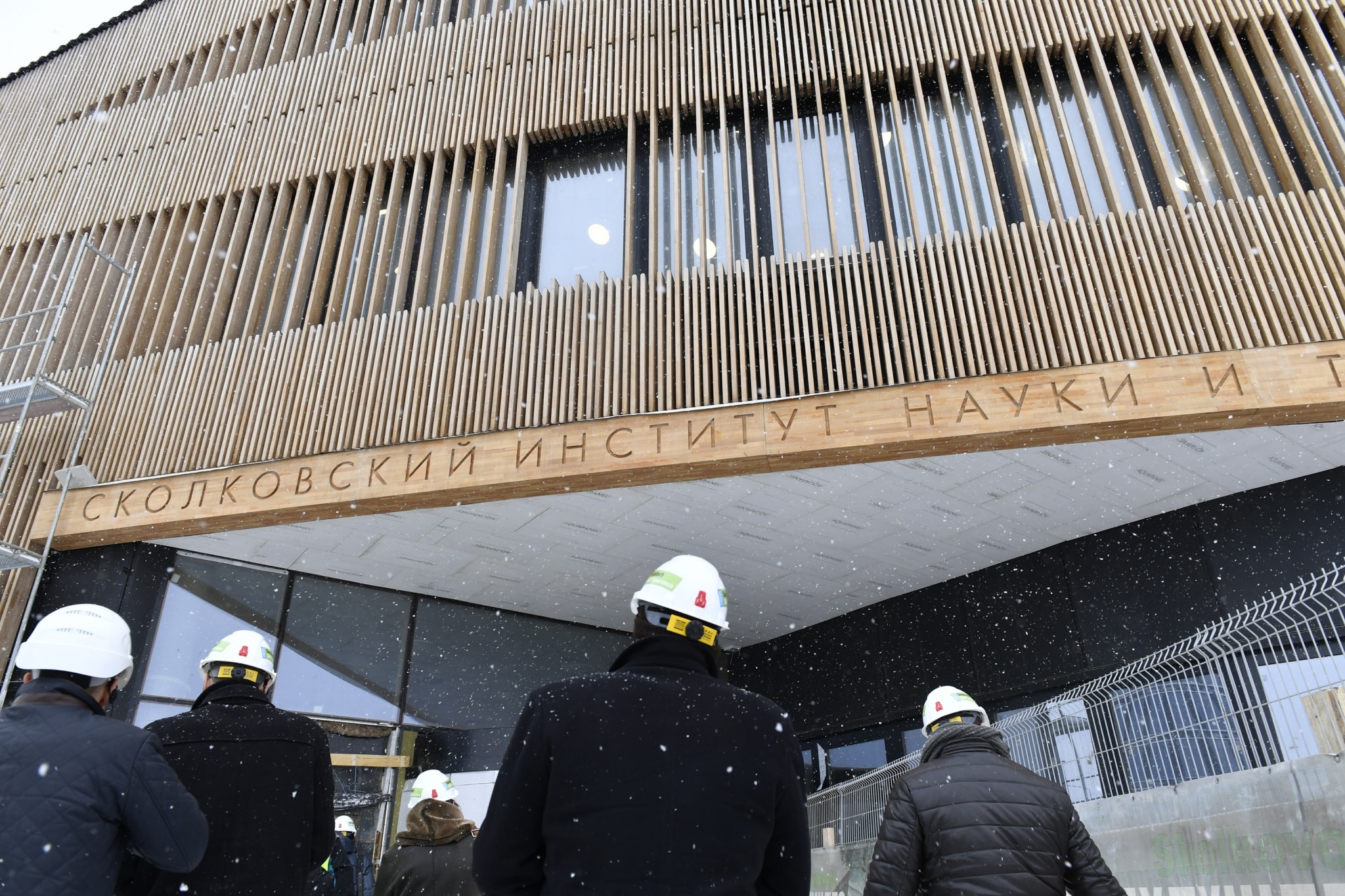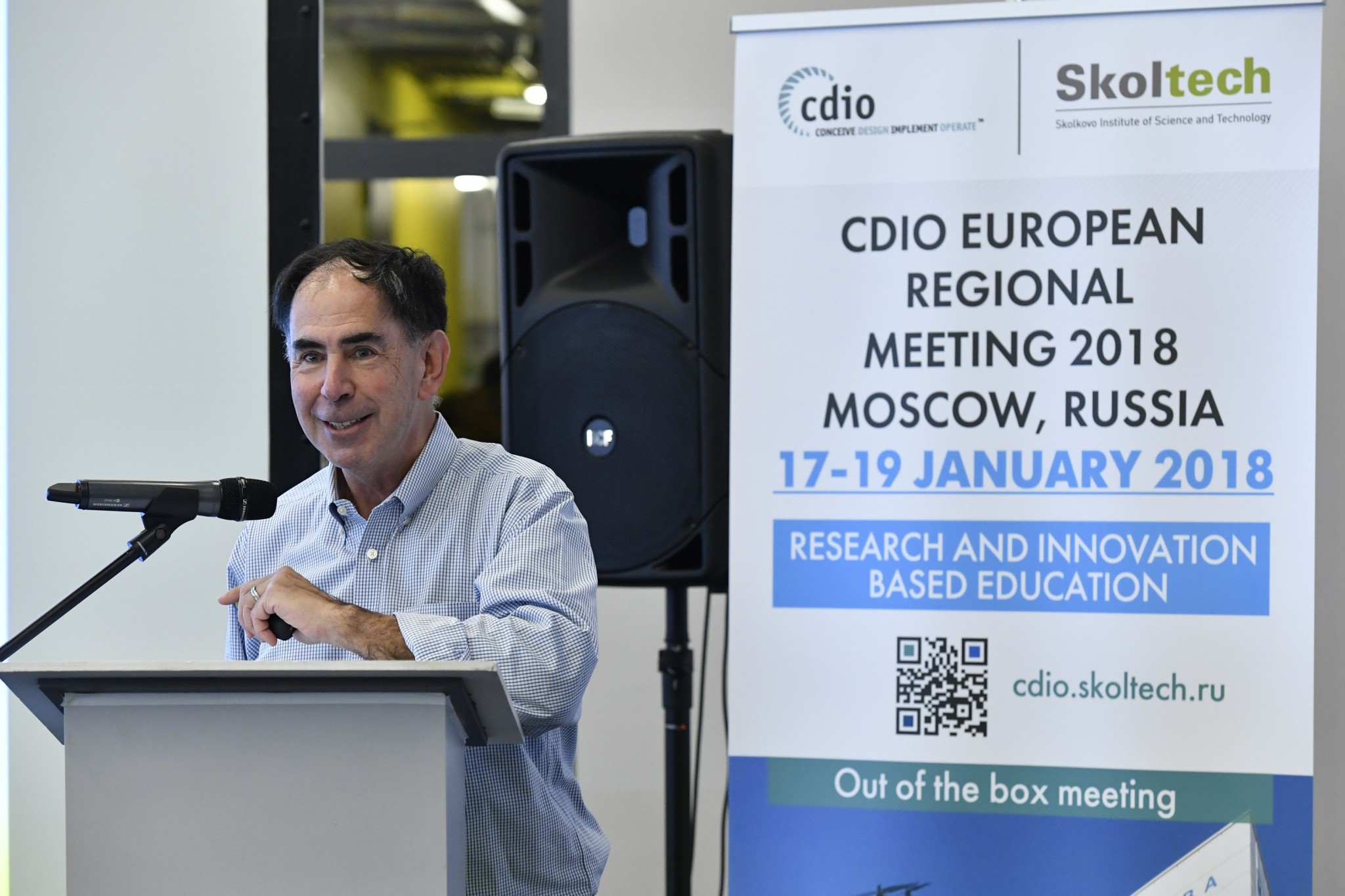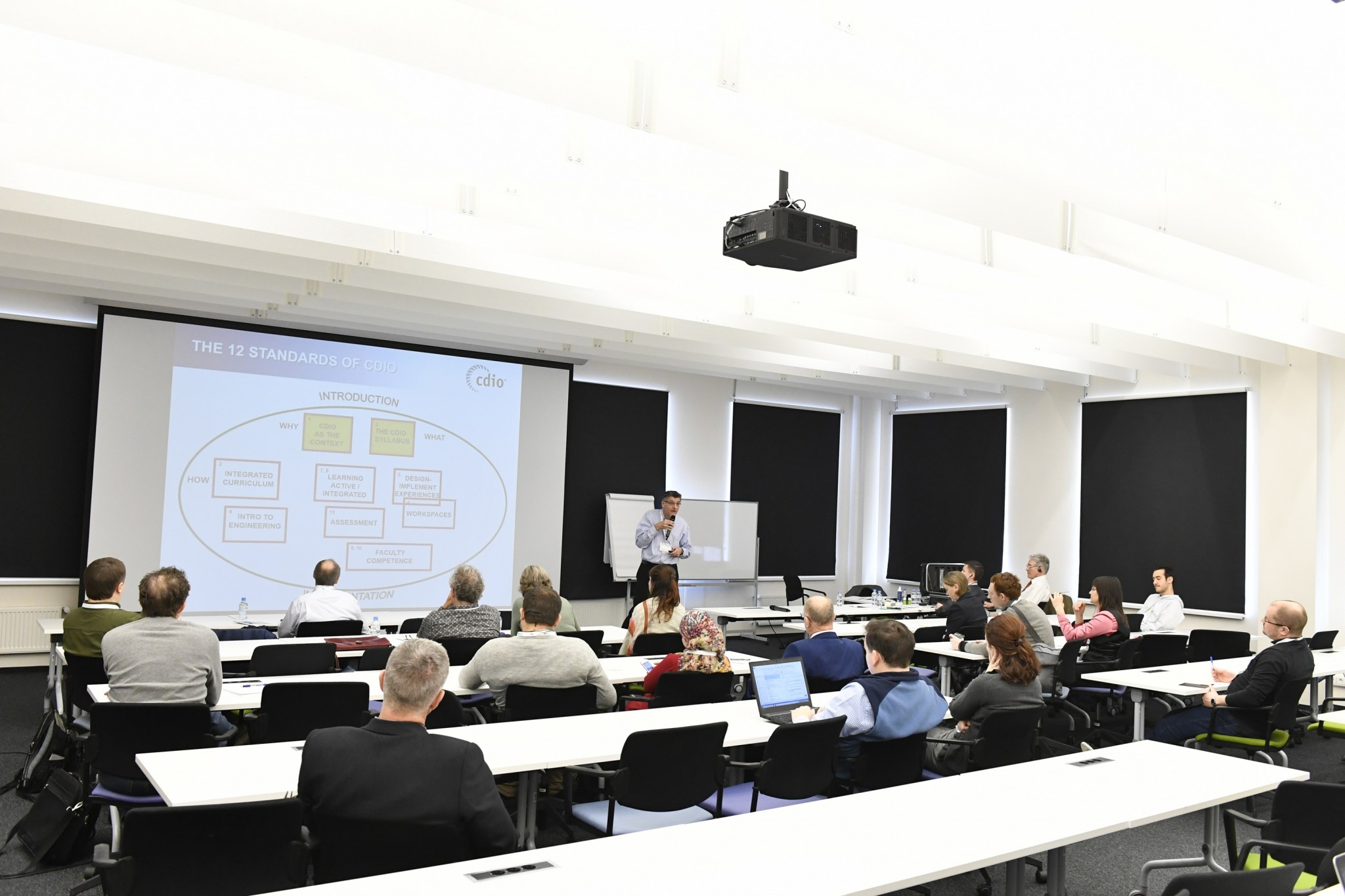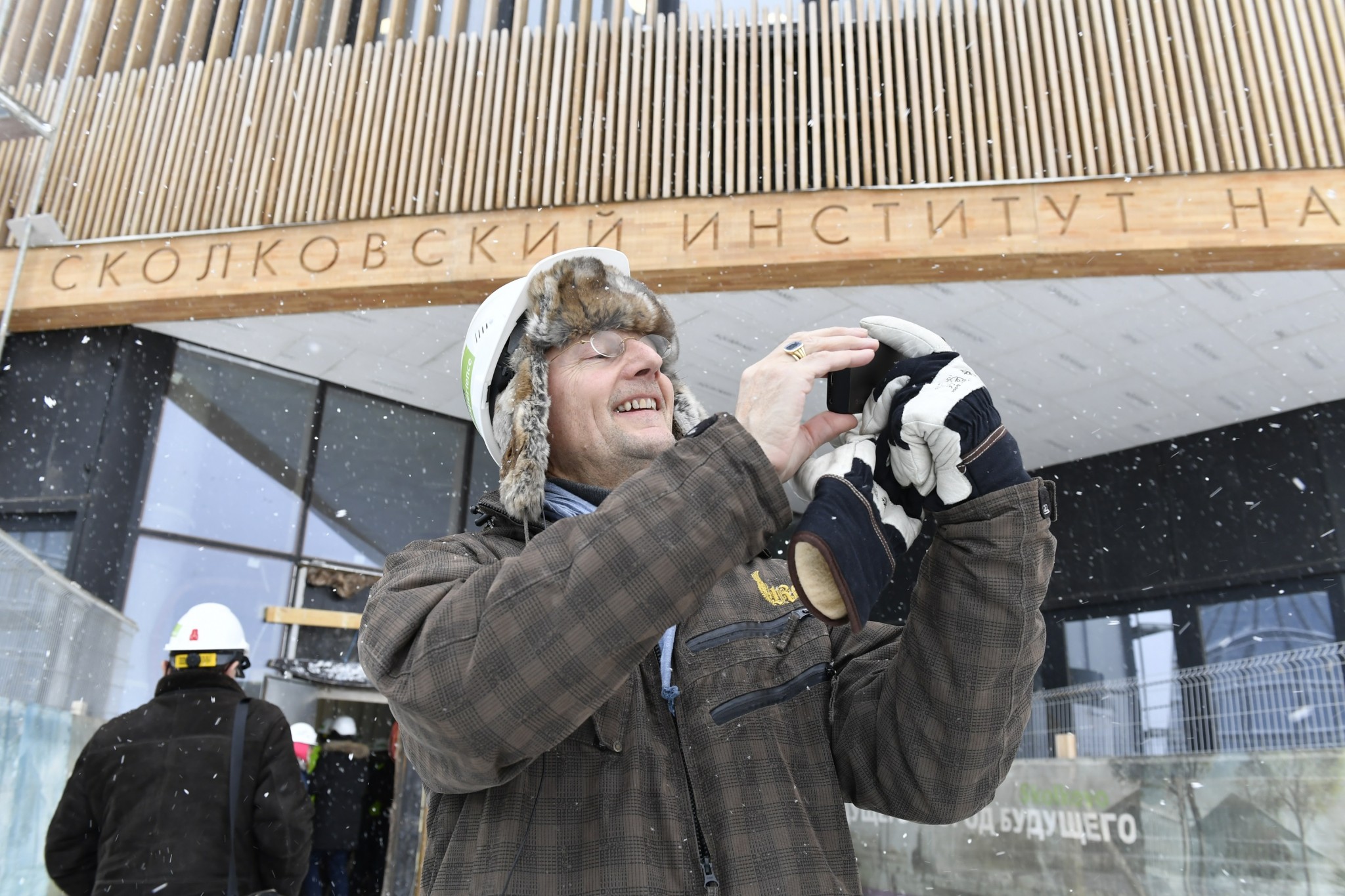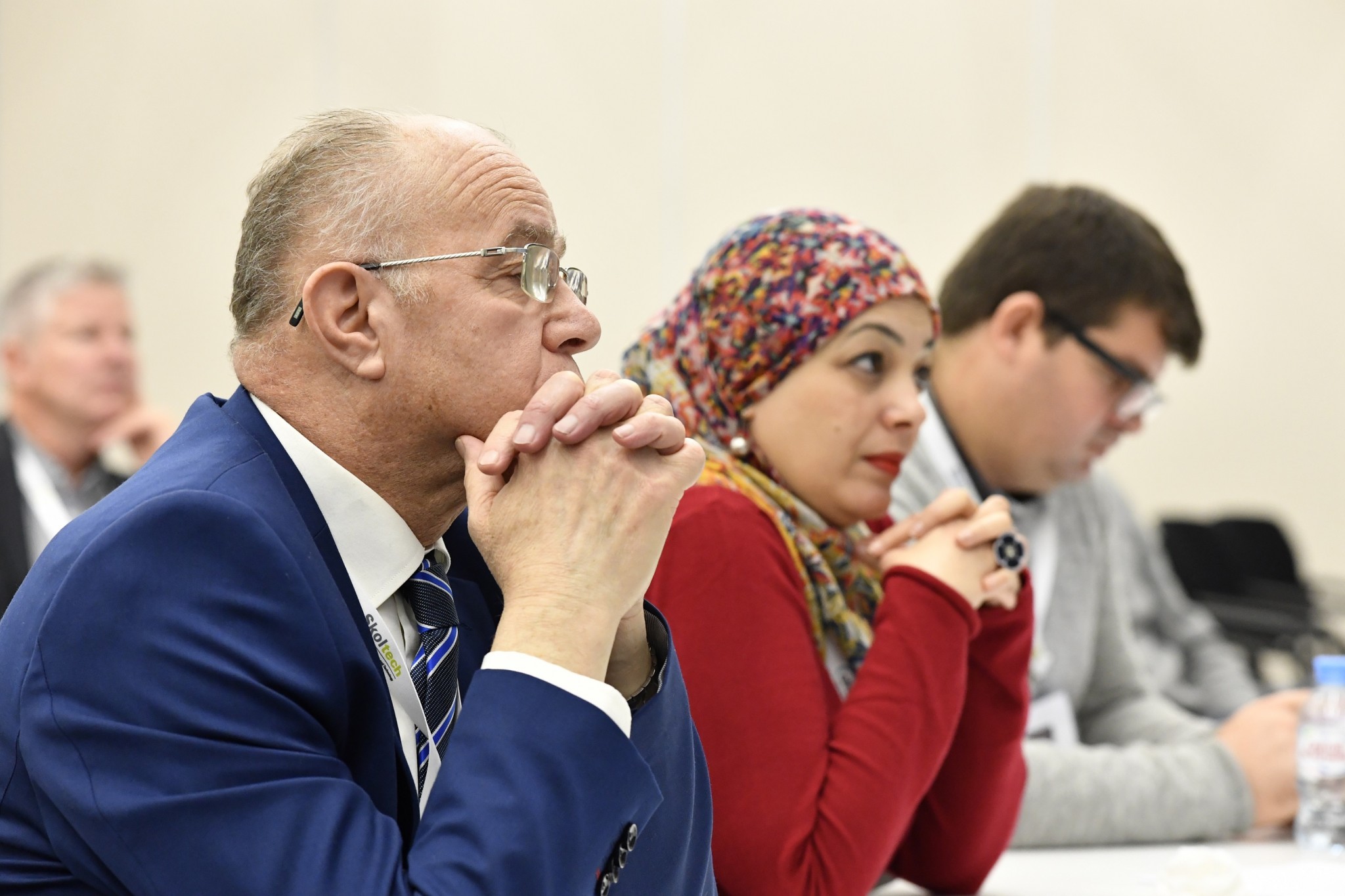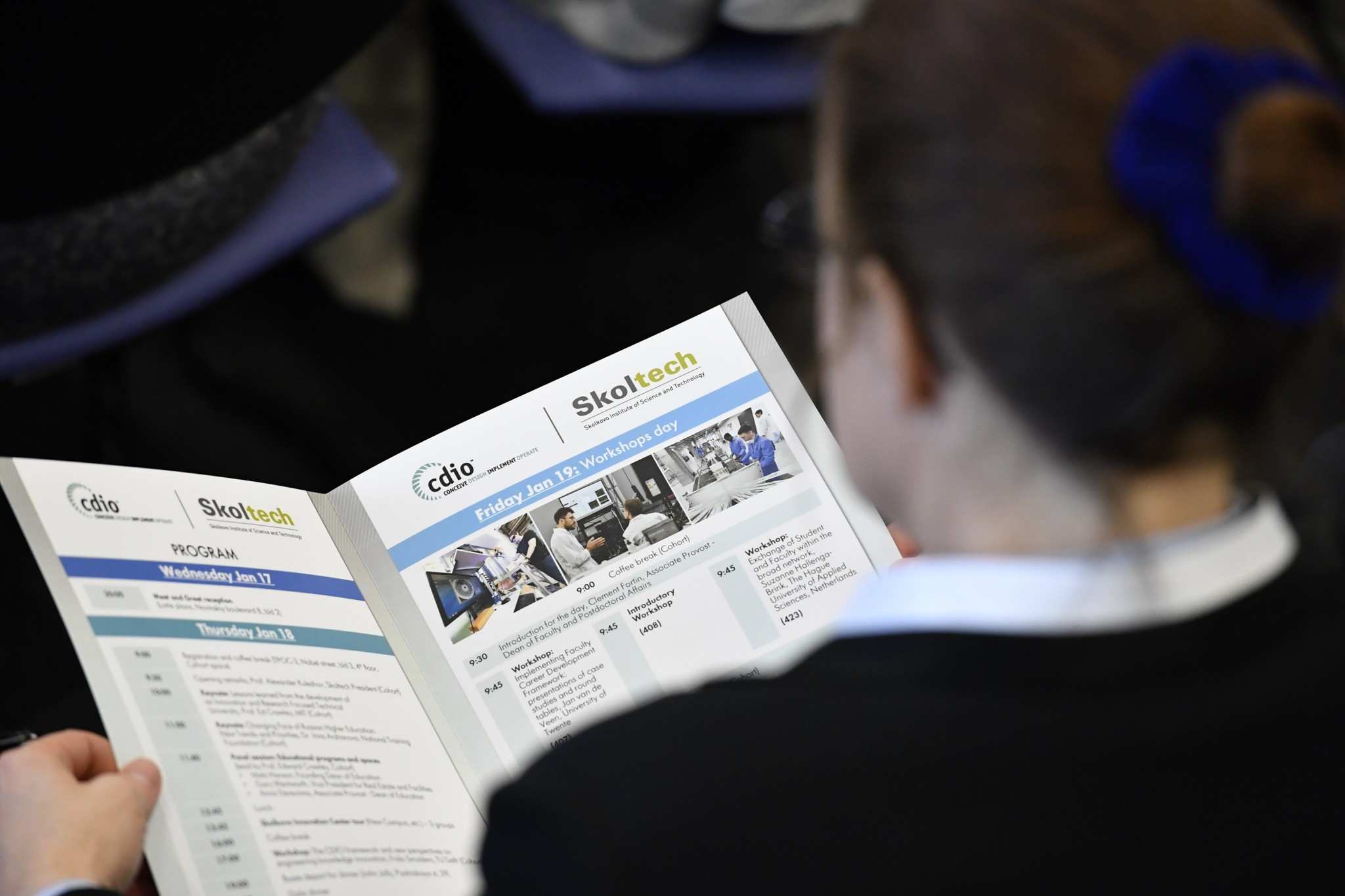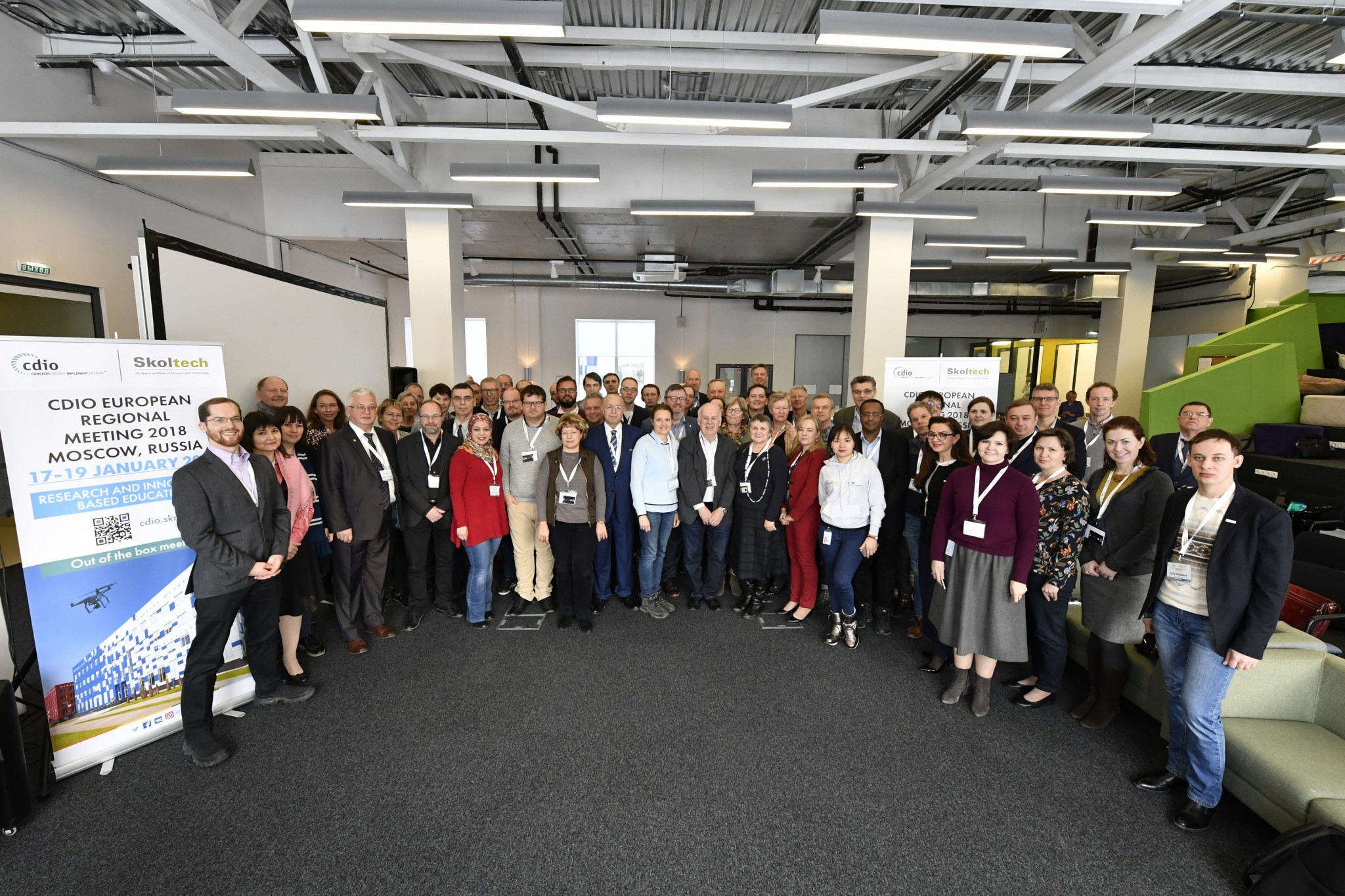In the year 2000, MIT Professor Edward Crawley gathered in Sweden with his counterparts from three local universities in a bid to revolutionize engineering education.
The outcome of their meeting was the CDIO initiative – an educational framework that aimed to bridge the gap between engineering academia and the needs of industry, which in recent years had grown increasingly disparate. The name reflects what the founders view as the optimal context for engineering education: Conceiving, Designing, Implementing and Operating
In the nearly two decades that have followed, the CDIO initiative has swept the globe, attracting the participation of leading universities on every continent aside from Antarctica.
Last week, dozens of representatives of the global CDIO community gathered at Skoltech to discuss a broad range of issues related to the framework, as well as to experience Skoltech’s implementation of it.
We caught up with a few of them on the sidelines of the two-day event to learn more about the initiative and the impact it’s had on engineering education worldwide.
A paradigm shift
During the 20th century, engineering education – which had previously focused on hands-on practice and solving real-world problems – broadly evolved into the teaching of engineering science.
As a result, employers were finding that despite being theoretically knowledgeable, many recent graduates were ill-equipped to handle the practice of engineering. In 1999, industry giants rallied the American Accreditation Board of Engineering and Technology to implement engineering educational reform.
“In an era of unprecedented technological advancement, engineering practice continues to evolve but engineering education has not changed appreciably since the 1950s. This schism has prompted industry, government, and other key constituents to question the relevancy and efficacy of current programs,” began a 1999 paper written by representatives of aerospace giants Boeing and TRW, Inc.
It was about this time that Crawley entered the scene.
“CDIO started as a program for four universities. There was never any intention at the beginning to go beyond those four schools,” Crawley said, referring to MIT as well as Swedish institutions Chalmers University of Technology, Linköping University and the Royal Institute of Technology.
But word of the initiative spread, attracting the attention of universities far and wide. It was this unexpectedly broad interest that inspired the founding members of CDIO to establish the list of 12 educational standards that define the initiative today.
The 12 standards
MIT’s Crawley spent four years at the University of Cambridge in the early 2000s as part of a joint university program aimed at stimulating economic development in the United Kingdom by strengthening its university system, a challenge that gave him a wealth of valuable experience translating concepts into easily ascertainable nuggets.
“The purpose of that was to codify what makes an innovation place work, and disseminate it through the British university system. So there was a need to have a way that you could explain things and standardize patterns of behavior,” he said.
CDIO’s founders and early participants set about explaining the work they had been doing, and at that point developed a set of simple standards.
Professor Johan Malmqvist, Dean of Education at Chalmers University of Technology, described the process of crafting the standards in the initiative’s earliest days.

Our first four interviewees (from left), Professors Edward Crawley, Johan Malmqvist, Clement Fortin, and Robert Songer. Photos: Skoltech, Kanazawa Technical College.
“We needed a way of communicating what we were doing; we thought we were doing something good for engineering education, but we also wanted a way to communicate in a concrete and measurable way to other interested universities what the CDIO program was,” he said.
The standards strive to define the philosophy of the CDIO program, and to help educators implement educational reform. They fall into five categories: philosophy, curriculum, design-implement experiences/workspaces, teaching/learning, and assessment/evaluation.
Philosophy
The first standard, and the only one to fall into this category, is “Context.” This refers to the adoption of the “principle that product, process, and system lifecycle development and deployment – Conceiving, Designing, Implementing and Operating – are the context for engineering education,” according to the CDIO website.
Skoltech Associate Provost and Dean of Faculty and Post-doctoral Affairs Clement Fortin has been a member of the initiative since 2004, when he was charged with overseeing a significant upgrade of the mechanical engineering program at the École Polytechnique de Montréal. In addition to modeling that department’s transition on the CDIO principles, he went on to apply them to a brand new aerospace engineering program he later established at the Canadian university.
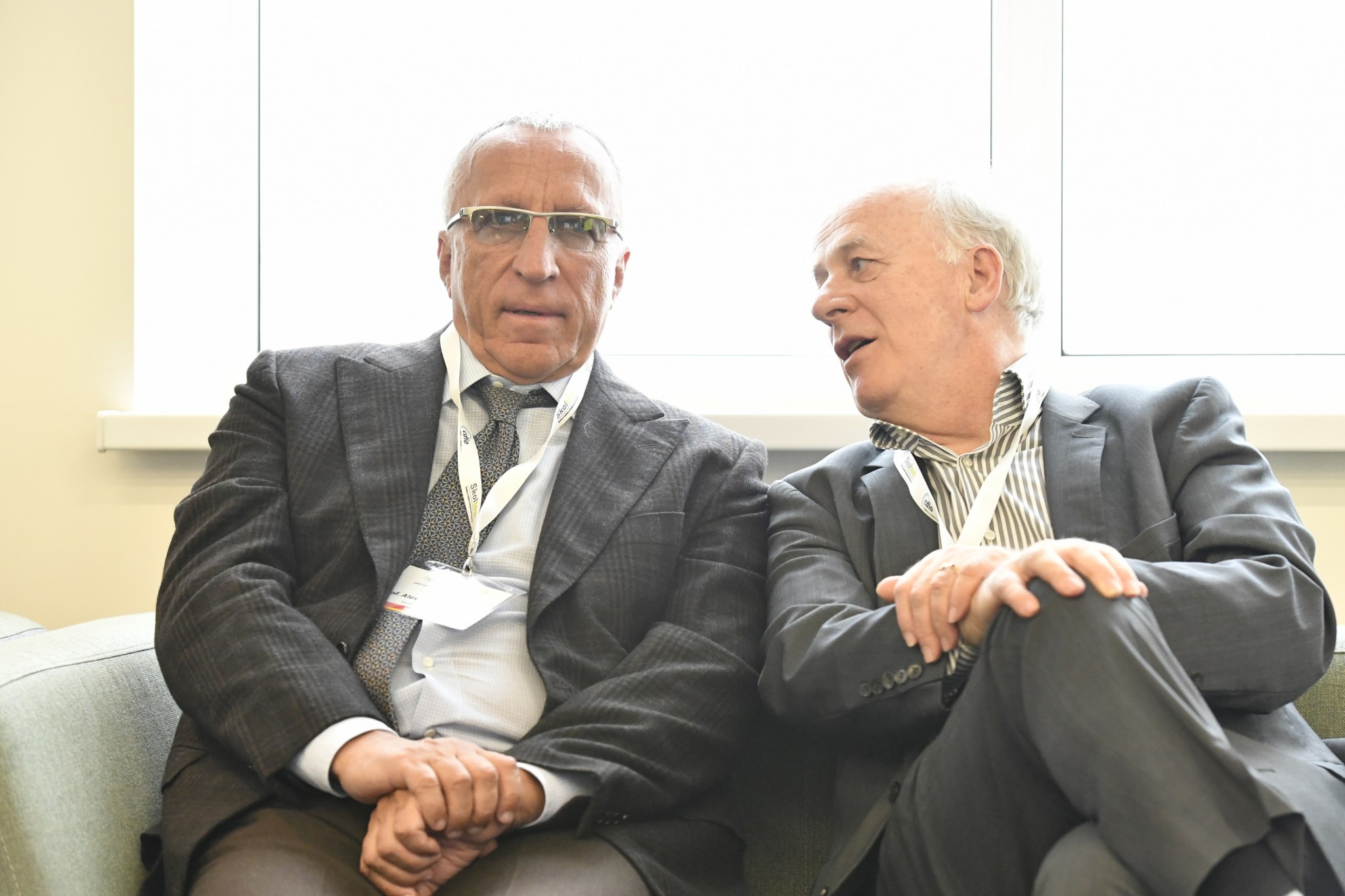
Skoltech President Alexander Kuleshov and Professor Clement Fortin share a chat on the sidelines of the CDIO meeting. Photo: Skoltech.
In his opinion, “Context” is among the two most important of the CDIO standards, but when it comes to Skoltech, he believes that – due to Skoltech’s multidisciplinary nature – the concept of context should be broadened to include innovation, science, research and education.
Curriculum
The founders devoted three standards to developing a solid engineering curriculum tailored to foster specific learning outcomes.
The “Learning outcomes” standard relates to the provision of scrupulously detailed and specific aims with respect to learned practical skills, disciplinary knowledge, and personal and interpersonal skills.
Professor Robert Songer of the Kanazawa Technical College in Japan believes this to be the most important standard. “I personally think that learning objectives are very important. As an engineer myself, I like to know what my goals are before I engage in something,” he said.
The “Integrated curriculum” standard refers to the creation of a curriculum explicitly designed to integrate supporting disciplinary courses, as well as personal and interpersonal skills.
Professor Ron Hugo, Co-Director of the initiative and Chair in Engineering Education Innovation at the University of Calgary’s Schulich School of Engineering, believes this is the most important of the 12 standards.
“Curriculum change in a program is challenging. You have to get the professors to agree to change the curriculum, and also get the professors to teach in different ways. But by looking at how we can adjust our curriculum in a manner to develop the professional skills, I think is what moves us along. You do it in small bite-sized portions, but there’s also a larger plan as you go through,” he said.
MIT’s Crawley said that in his view, “Context” and “Integrated curriculum,” combined, are the most important of the standards. Together, they represent “the principle that engineering – conceiving, designing, implementing and operating – should be the basis of engineering education,” he said. “You have to accept this because otherwise the other 11 standards don’t follow.”
Skoltech’s Fortin likewise believes “Integrated curriculum” to be the second most important of the standards, next to “Context.”
Professor Frido Smulders of the Delft University of Technology said that in his view, “Integrated curriculum” is also the most difficult of the standards to implement.
“There is simply too much scientific knowledge on one side and too much tacit and ‘uncodified’ knowledge in practice that to integrate these into a curriculum is very challenging, if in the long run doable at all,” he said.
He added that the challenges associated with this standard aren’t limited to engineering education.
“One needs to look for elegant ways to solve these issues and develop an additional theoretical framework on academic education that aims to deliver a ‘universal academic brain’ to our students. Not just a brain filled with specialized knowledge, but a brain capable of absorbing and developing new specialized knowledge. Such could be the ‘lifelong learning’ brain; maybe we should make that CDIO standard no 13: educate for lifelong learning. This is not an easy task since there is to my knowledge no unified and widely accepted definition of what ‘lifelong learning’ entails,” he said.

Our next four interviewees (from left), Professors Ron Hugo, Frido Smulders and Aldert Kamp, and Senior Lecturer Suzanne Hallenga-Brink. Photos: Skoltech, Delft University of Technology, and The Hague University of Applied Sciences.
The “Introduction to Engineering” standard, which also falls into the curriculum section, calls for the establishment of an introductory course that provides all of the essentials of engineering practice, as well as personal and interpersonal skills.
Design-implement experiences and workspaces
This section aims to provide students with practical engineering education in intelligently designed facilities from highly skilled professors.
The “Design-implement experiences” standard calls for the inclusion in an engineering curriculum of at least two experiences – basic and advanced – wherein students develop new products or systems.
The “Engineering workspaces” standard encourages the use of workspaces and laboratories that inspire hands-on learning. As explained in further detail below, this proved to be a central theme at the Skoltech meeting, as CDIO delegates from around the globe had the opportunity to tour the institute’s state-of-the-art new campus, and gain insights into the philosophical principles underlying its architectural plan.
The “Enhancement of faculty skills competence” standard refers to active efforts to improve the competence of faculty members with respect to the engineering process, as well as to personal and interpersonal skills.
Chalmers’ Malmqvist said that based on his own research, for many engineering programs, this is the most trying of the standards to implement. “I’ve actually done a survey of all of the universities that are involved in the CDIO initiative, and what comes out as the most difficult is faculty competence in engineering. Faculty members are often specialized in science, which is necessary because that’s what they’re doing regularly as they’re required to compete for research grants, but not sufficient when they have to teach engineering; then they also have to be capable in engineering, and that’s hard to find and even harder to train,” he said.
Teaching and learning
The teaching and learning standards relate to various methods and tools that can be used to heighten the teaching quality in an engineering program.
The “Integrated learning experiences” standard champions the integration of disciplinary and practical knowledge along with personal and interpersonal skills.
Professor Aldert Kamp – Co-Director of the CDIO Initiative and Director of Education in Aerospace Engineering at the Delft University of Technology – believes that this is both the most important and the most challenging of the standards to implement.
“All of the experts are discipline-based, and each of them believes that their discipline is the most important thing in the universe, and if you tell them they have to enrich that with creativity or other interdisciplinary skills, they find it very difficult because they themselves are not equipped for that,” he said.
The “Active learning” standard encourages experiential educational activities.
The “Enhancement of faculty teaching competence” standard relates to actions aimed at bolstering faculty competence in providing integrated and experiential learning opportunities, as well as in assessing student learning.
Songer of the Kanazawa Technical College believes this to be the most challenging of the standards to implement. In his experience, professors are often reluctant to continue developing their own teaching skills.
Skoltech’s Fortin likewise opined that when it comes to implementing the 12 standards, the two faculty-related ones – enhancement of faculty skills and teaching competence – are the toughest to implement.
“Faculty concerns are difficult because they require change, and people are reluctant to change. Faculty members are used to doing their own thing. They’re quite individualistic. And to tell them that they need to improve in certain areas – it takes time, and we need to work on developing ways to do this constructively,” he said.
Assessment and evaluation
This section refers to the assessment of student learning and the evaluation of a program’s educational process.
The “Learning assessment” standard challenges engineering programs to accurately measure each student’s understanding of practical and disciplinary engineering skills, as well as their personal and interpersonal skills.
MIT’s Crawley believes this to be the most challenging of the standards to implement. “It’s a very, very important thing, that frankly, in the 20-30 years I’ve worked on it, we’ve made very little progress on,” he said.
Senior Lecturer Suzanne Hallenga-Brink, Head of the industrial design engineering program at The Hague University of Applied Sciences in the Netherlands and a CDIO European regional leader, agreed that successfully implementing this standard is trying, but said that she also believes it to be the most important.
“If you truly offer integrated assessments – which I’m experimenting with in my own program – it takes a lot of collaboration and change for the teaching staff, so it’s a big challenge, but it’s a good one,” she said.
The “Program evaluation” standard presents a system for evaluating a program’s success with respect to the 12 principles in order to encourage improvement.
CDIO as a whole and the future of engineering education
Malmqvist of Chalmers does not believe that any of the principles is particularly superior; rather, he believes it is imperative to implement them as a set in its entirety.
“I think it’s the set that is important. When we have worked with a set of standards, we have gotten a systematic approach to designing our programs, and that takes into consideration many things. So in many cases it’s really working with the whole set, which is the key point. All of them are important in their own right, but they’re even stronger as a combined set,” he said.
Asked why the 12 standards seem to be so broadly embraced by geographically diverse engineering schools, MIT’s Crawley explained: “I think they’re just a codification of what’s more or less generally acknowledged as good practice. The hard thing is not to get people to agree that the CDIO principles are good principles; the hard thing is to convince people to go to work in the morning and do it.”
Delft’s Kamp added in a similar vein, “CDIO is really not a theoretical network; it’s a network of common sense. If you’re really thinking about what education should be, you end up with a CDIO-type of framework.” Notably, he discovered CDIO after having set up a bachelor’s program at his university that perfectly mirrored the initiative’s guiding philosophy.
Asked why CDIO is important to the future of engineering education, Delft’s Smulder said: “These days, there’s so much more knowledge about engineering available in the scientific domain as well as in the domain of practice. At this point, we tend to teach as much as we know, but with the passage of time, we have come to know too much to teach, so basically we have to revert to another system that helps students to learn the fundamentals, but also learn how to specialize later on in their careers, and embark on a road of lifelong learning.”
Skoltech and the CDIO
Some 11 years after founding the CDIO initiative in Sweden, Crawley went on to become the founding president of Skoltech. By that point, he had fully internalized the 12 standards, which served as core components in creating Skoltech.
During the opening session of the meeting, he joked about the convergence of CDIO with Skoltech: “It’s like your children from your first marriage and your children from your second marriage meeting each other.”
In a rich diversity of ways – from the design of its curriculum to the architectural plan of its new campus – Skoltech mirrors the wisdom of the CDIO framework. Toward this end, the new campus building was in the spotlight throughout the course of the meeting, particularly with respect to the “Engineering workspaces” standard.

Skoltech Vice President for Real Estate and Facilities Gary Wentworth leads CDIO members on a tour of the new building. Photo: Skoltech.
The new campus building – designed by the Herzog & de Meuron architecture bureau – was designed with the express aim of creating an innovative and intellectually nurturing learning environment for students of science and engineering.
Skoltech Vice President for Real Estate and Facilities Gary Wentworth took attendees on a tour of the massive campus, which is set to open later this year. Nearly 60% of the 136,000 square-meter space will be devoted to research functions. The campus will also include several world class laboratories, an auditorium, classrooms and indoor and outdoor communal areas. The entire campus will be connected by interlocking rings, representing the integrated nature of education at Skoltech.
“For me, a highlight of this gathering was the discussion about engineering workspaces and the design of Skoltech’s new campus building,” said the University of Calgary’s Hugo, explaining that his program had recently undergone a capital expansion process as well.
“I enjoyed hearing the thought process that people went through in designing their new work spaces, and being able to go see the new campus. It was a wonderful opportunity to hear about the architectural team’s concepts and then see the nearly final product,” he added.
Chalmers’ Malmqvist echoed the sentiment. “It’s been great to be at Skoltech and great to see the soon finished building, which we’ve been hearing about for quite a while,” he said.

An artistic rendering of Skoltech’s new state-of-the-art campus, set to open in 2018. Image: Skoltech.
Delft’s Kamp chimed in. “The most impressive thing about the university was the construction work of the new campus. I would really like to come back here when everything is operational and see how the integrated concept of education, research and innovation has worked out,” he said.
Fortin of Skoltech relished the opportunity to highlight the institute’s promise to the greater CDIO community, and was also pleased with the opportunity to share Russia with many who had never previously visited.
Pleased that the meeting was fruitful, he said: “The fundamental ideas that were presented by Ed Crawly and the other speakers, and what we’ve been discussing here from the very beginning, are also very important for the future of CDIO. They’ll make a difference,” he said. “But let’s see if people are willing to implement them.”
Fortin added: “I would like to personally thank the Faculty and Post-Doctoral Affairs Office team, the Events team and the Communication department of Skoltech and the Facilities team for their great tour to the New Campus; their exceptional professionalism greatly contributed to the success of this international meeting and I am very indebted to all for this.”
